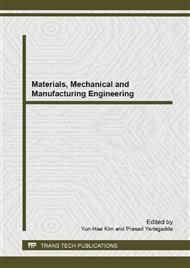[2]
Xinjiang Hu, Jingsong Wang, Yunguo Liu, Xin Li, Guangming Zeng, Zhenglei Bao, Xiaoxia Zeng, Anwei Chen and Fei Long: J. Hazard. Mater. Vol. 185 (2011), p.306–314.
Google Scholar
[3]
M. Monier, D.M. Ayad, Y. Wei and A.A. Sarhan: J. Hazard. Mater. Vol. 177 (2010), p.962–970.
Google Scholar
[4]
M. Monier, D.M. Ayad, B.Y. Wei and A.A. Sarhan: React. Funct. Polym. Vol. 70 (2010), p.257–266.
Google Scholar
[5]
Yehua Zhu, Jun Hu and Jianlong Wang: J. Hazard. Mater. Vol. 221–222 (2012), p.155–161.
Google Scholar
[6]
R. K. Shervedani and M. Bagherzadeh: Electrochim. Acta. Vol. 53 (2008), p.6293–6303.
Google Scholar
[7]
Ping Ding, Kelong Huang, Guiyin Li and Wenwen Zeng: J. Hazard. Mater. Vol. 146 (2007), p.58–64.
Google Scholar
[8]
R. R. Navarro, S. Wada and K. Tatsumi: J. Hazard. Mater. Vol. 123 (2005), p.203–209.
Google Scholar
[9]
Ying Xu and Fang Zhang: J. Hazard. Mater. Vol. 137 (2006), p.1636–1642.
Google Scholar
[10]
J. Lu, D.B. Dreisinger and W.C. Cooper: Hydrometallurgy. Vol. 45 (1997), p.305–322.
Google Scholar
[11]
G. uorong. Xu, Jiaona Wang and Congju Li: Chem. Eng. J. Vol. 198–199 (2012), p.310–317.
Google Scholar
[12]
Yunqing Xing, Xueming Chen and Dahui Wang: Environ. Sci. Technol. Vol. 41 (2007), p.1439–1443.
Google Scholar
[13]
E. Taboada, G. Cabrera and G. Cardenas: J. Chil. Chem. Soc. Vol. 48 (2003), p.7–12.
Google Scholar
[14]
R.A.A. Muzzarelli and R. Rocchetti: J. Chromatogr. Vol. 96 (1974), p.115–121.
Google Scholar
[15]
K. C. Gavilan, A.V. Pestov, H. M. Garcia, Y. Yatluk, J. Roussy and E. Guibal: J. Hazard. Mater. Vol. 165 (2009), p.415–426.
DOI: 10.1016/j.jhazmat.2008.10.005
Google Scholar
[16]
M. Ruiz, A.M. Sastre and E. Guibal: React. Funct. Polym. Vol. 45 (2000), p.155–173.
Google Scholar
[17]
E.B. Denkbas, E. Kilicay, C. Birlikseven and E. Öztürk: React. Funct. Polym. Vol. 50 (2002), p.225–232.
Google Scholar
[18]
Limin Zhou, Yiping Wang, Zhirong Liu and Qunwu Huang: J. Hazard. Mater. Vol. 161 (2009), p.995–1002.
Google Scholar
[19]
E. B. Denkbas, E. Kilicay, C. Birlikseven and E. Ozturk: React. Funct. Polym. Vol. 50 (2002), p.225–232.
Google Scholar
[20]
E. Repo, J. K. Warchol, T. A. Kurniawan and M. E.T. Sillanpää: Chem. Eng. J. Vol. 161 (2010), p.73–82.
Google Scholar


